Ayodhya: With the pran pratishtha or consecration ceremony of Ram lalla’s idol set to take place at Ayodhya’s Ram Mandir on 22 January, Suryavanshi Thakurs of Uttar Pradesh can finally end what they say is an almost 500-year-old vow taken by their ancestors.
Residents of “about 115 villages” located on both sides of the Saryu river in Uttar Pradesh’s Ayodhya and neighbouring Basti district, the Suryavanshi Thakurs consider themselves the descendants of the Hindu deity Ram.
They also believe that about 90,000 of their ancestors had waged a war against the first Mughal emperor Babur’s commander Mir Baqi, after he “brought down an ancient Ram temple — marking the birthplace of Ram — with a cannon and built a mosque there, the Babri Masjid”.
With the abode of their deity fallen, the men of the community “decided to wage a war against the Mughal army”. But before marching ahead, the fighters are said to have gathered at Surya Kund — a pond and temple dedicated to their kuldevta [clan deity] Surya [the sun god] — and taken a vow that they won’t wear a pagdi (turban) or leather shoes or use umbrellas till the Ram janmabhoomi site was liberated — that is till a temple was reconstructed at the site where Baqi had constructed a mosque.
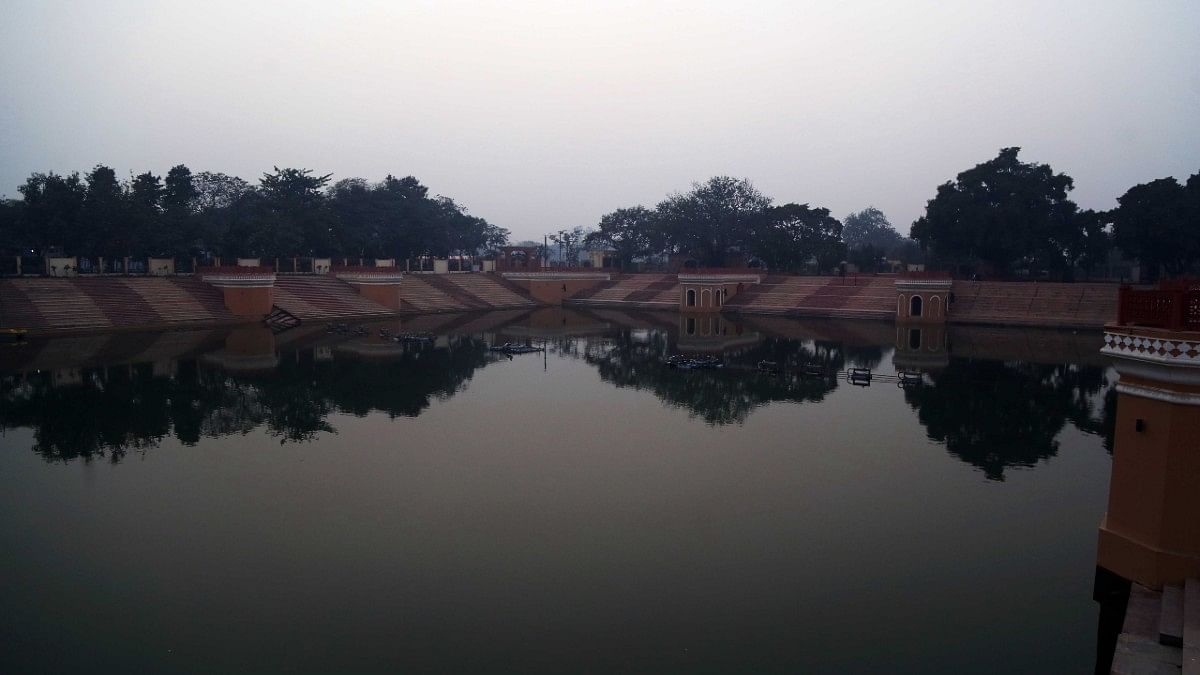
According to Shri Ram Janmabhoomi Ka Prachin Itihaas, a book penned by writer Ram Gopal Visharad, the vow was captured in the following couplet attributed to a poem by poet Jayaraj based on events around the Ram temple’s alleged demolition in the 16th century:
“Janmabhoomi uddhar hoye, ja din bari bhag, chhata jag panahi nahi, aur nahi bandhhi paag… (till the time the janmabhoomi is not liberated, we will not use an umbrella or wear leather shoes or pagdi).”
The Babri Masjid, built in 1528-29 by Mir Baqi according to its inscription, was demolished on 6, December, 1992, by kar sevaks (people offering community service), as part of the long-standing Babri Masjid-Ram Janmabhoomi dispute. The Bharatiya Janata Party was among those at the forefront of the movement demanding a temple on the disputed site.
In 2019, the Supreme Court unanimously ruled that the disputed land in Ayodhya belonged to the Hindus, paving the way for the construction of a Ram Mandir at the site.
With the consecration of Ram lalla’s idol now set to take place at the newly-built temple, the self-proclaimed descendants of the Suryavanshi Thakur warriors are now set to wear the pagdi — considered a symbol of Rajputana pride — for the first time in almost 500 years.
Visharad’s book mentions the names of at least 18 such warriors who had “sacrificed their lives for the cause of the liberation of the Ram janmabhoomi”, and claims that their descendants still reside in the villages of Ayodhya.
Three of these warriors, Thakur Gajraj Singh, Thakur Kunwar Gopal and Thakur Jagdamba Singh, were from the villages of Sarairasi, Rajepur and Sirsinda, respectively, according to the book, and ahead of the 22 January Ayodhya event, ThePrint caught up with some of their self-proclaimed descendants.
Dayaram Singh, 63, who calls himself an eighth-generation descendant of Thakur Gajraj Singh, recounted the lore that has been passed on to his generation from his forefathers.
“A total of 76 battles were fought for the liberation of the Ram janmabhoomi from Babur’s era till British rule. When our forefathers heard about Mir Baqi having brought down the temple, they were incensed and decided to liberate the Ram janmabhoomi. They gathered an army of 90,000 Suryavanshi Thakurs and decided to wage a war against the Mughal army,” he told ThePrint.
Dayaram added: “As they marched towards the Ram janmabhoomi, the warriors gathered at Surya Kund where they took a vow that they would not wear a pagdi on their heads, neither wear a panahi [leather shoes] on their feet nor cover their heads with an umbrella till they liberated Lord Ram’s janmabhoomi.”
Dayaram, as well as other people from the community, told ThePrint that before the pran pratishtha, they will gather near the Surya Kund where they will offer umbrellas to their kuldevta and finally wear the pagdi — marking the fulfilment of their ancestors’ vow for the Ram temple.
They, however, also expressed a grouse — not a single member of the community has been invited yet for the consecration ceremony, nor made part of the Shri Ram Janmabhoomi Teerth Kshetra trust formed to manage the affairs of the new Ram temple, they claimed.
Also Read: ‘Warrior Sadhu’ to Kothari brothers — the 10 unsung heroes of Ayodhya Ram Mandir movement
Upholding the vow
According to Dayaram, the Suryavanshi Thakurs fought Baqi’s army 29 times before his forefather Gajraj Singh suffered martyrdom in the 30th attack.
Sitting in his single-storey house in Sarairasi village, Dayaram’s elder brother, Vanshraj Singh, 70, recalled family members from previous generations describing Gajraj Singh as a well-built, seven-feet tall man, who was in his early twenties and unmarried when he laid down his life in the battle for the janmabhoomi in the 16th century.
“Since he and his brother Ram Avtar were at the forefront of the war, their house was blown up with a cannon. In our weddings, mandaps remain simple and are not covered with an umbrella. We are still upholding our ancestors’ vow. Even today, the khatauni [record] of our land, has the name of Gajraj Singh ji,” Vanshraj said, adding that some remnants of their ancestral house, including an old well, existed till date.
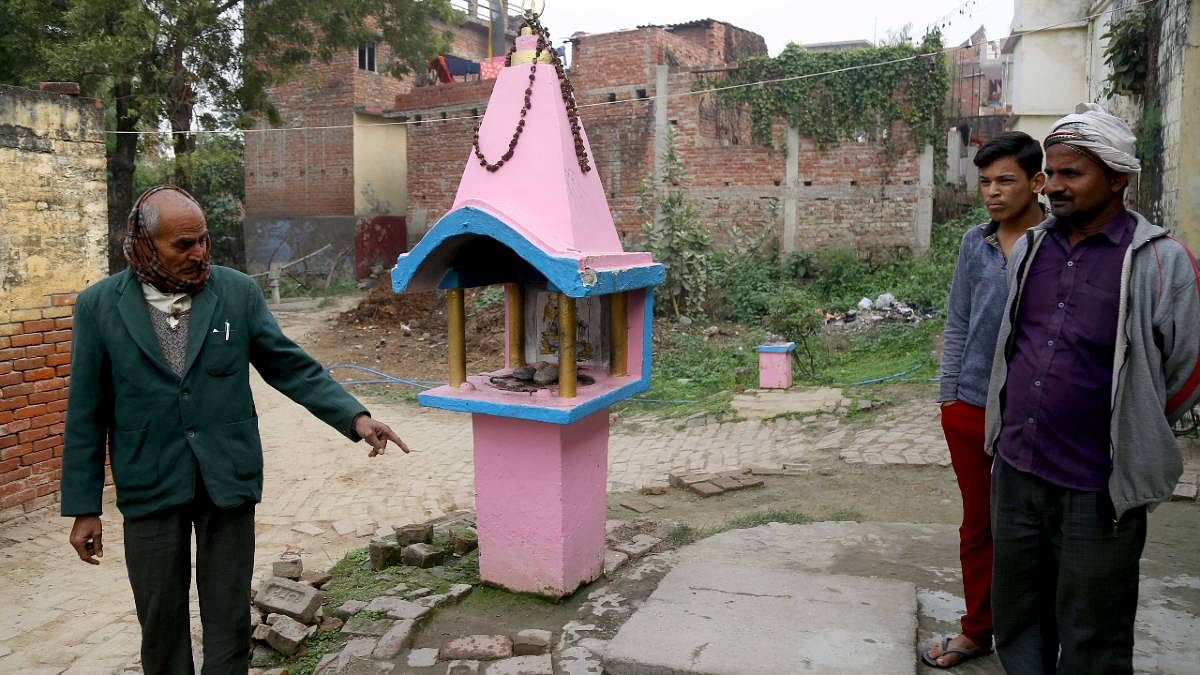
Vanshraj’s son Shiv Vijay Singh, 45, explained the emotional reasoning behind the vow taken by the Suryavanshi Thakurs.
“Our forefathers did not have fire weapons and they fought with swords, spears and bows. They were up against a powerful Mughal army which was armed with guns and cannons. They knew they were the weaker side but they had to do something for Lord Ram as we are his descendants. They felt that if their ancestor [idol of Ram] was without a cover [the temple] on his head, how could they cover their heads?” he explained.
Shailendra Pratap Singh, who calls himself the eighth-generation descendant of Jagdamba Singh of Sirsinda village, told ThePrint that the warriors were led by Pandit Devi Deen Pandey of Sanethu village who was the purohit [priest] of their families and had gathered the Kshatriyas of the villages.
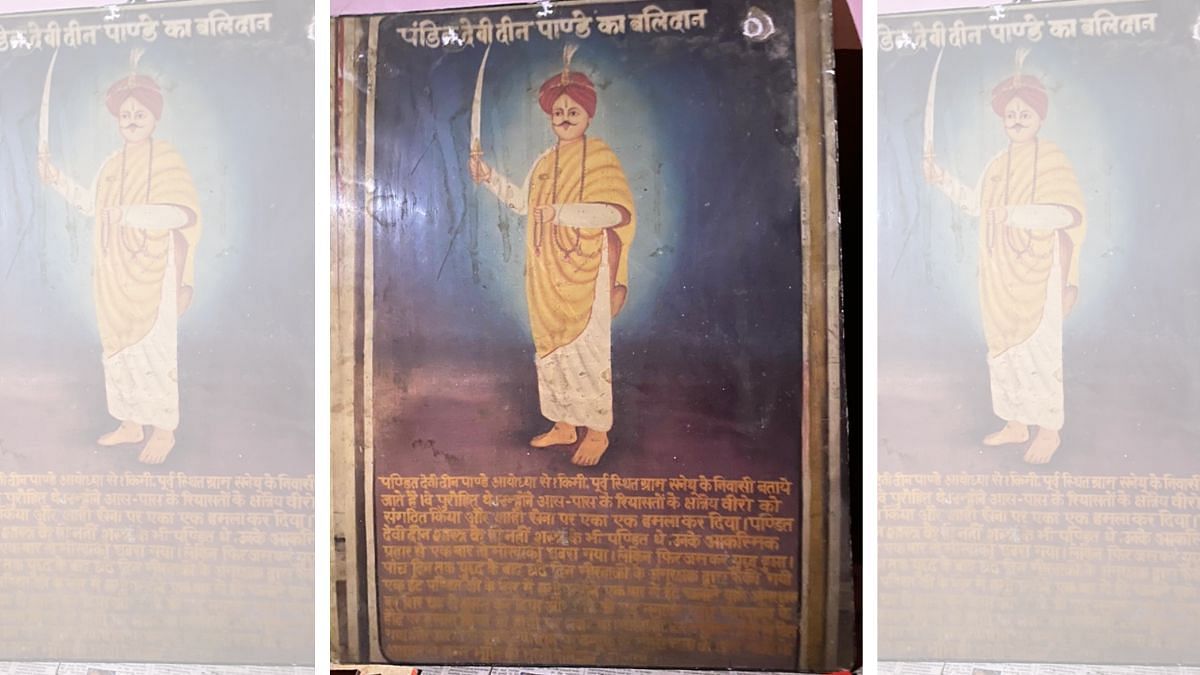
A portrait of Devi Deen Pandey at Karsewakpuram, Ayodhya | Suraj Singh Bisht | ThePrint
Sati Shanker Singh, a sexagenarian from Sarairasi, said the war was fought by people from several communities, including the Kshatriyas who were leading from the front, the Yadavs, Nishads and Harijans too.
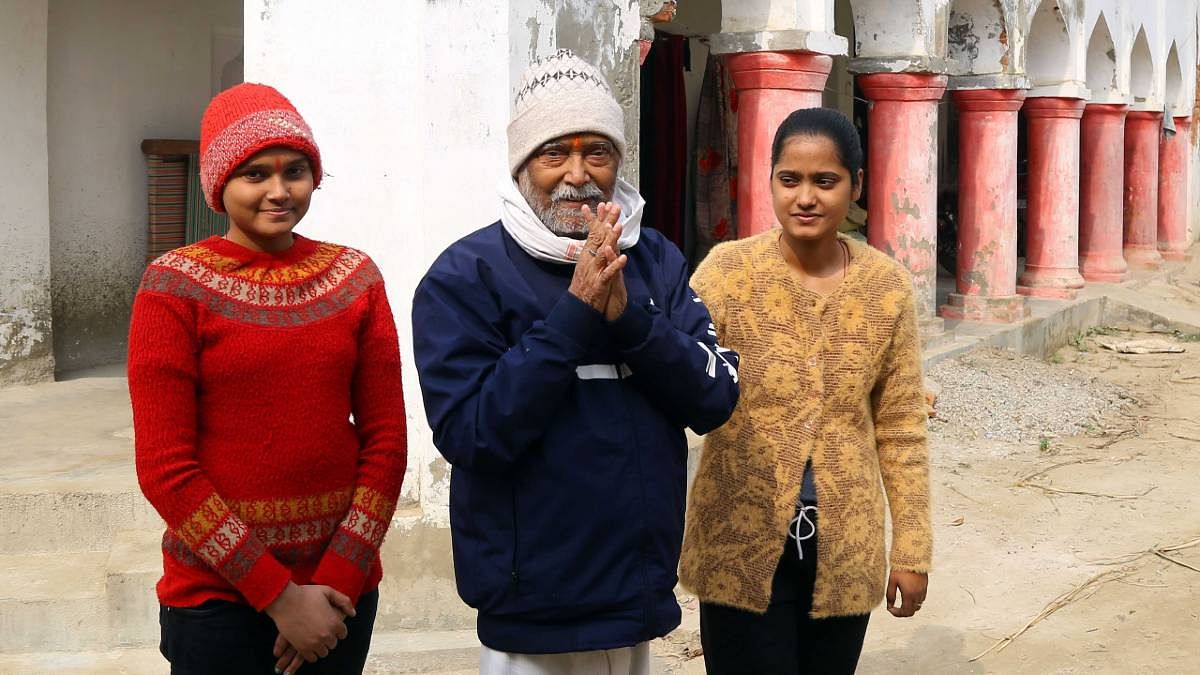
According to the residents of Sarairasi, since the time of the wars against Baqi’s army till the rath yatra led by BJP leader L.K. Advani demanding the construction of the Ram temple in the early 1990s, the Suryavanshi Thakurs had participated in all battles for the janmabhoomi.
In 1990, Advani had embarked on the Ram Rath Yatra from Somnath in Gujarat to Ayodhya to press for his party’s demand for the temple.
Suryavanshi Thakurs’ kar seva
The Ram Janmabhoomi movement gathered steam in the 1990s, spearheaded by leaders of the Bharatiya Janata Party (BJP) and organisations like the Rashtriya Swayamsevak Sangh and the Vishva Hindu Parishad.
Advani had embarked on the rath yatra from Somnath in Gujarat to Ayodhya in 1990 to press for his party’s demand for the temple on the disputed site where the Babri Masjid stood in Ayodhya. The Babri Masjid was demolished in December 1992.
Several thousands of kar sevaks had reached the temple town and braved police action in which some accounts claim over 50 people were killed.
The Suryavanshi Thakurs claim many people from their community helped provide food and accommodation to the kar sevaks coming from across the country and helped them with maps to ensure easy movement towards the janmabhoomi site and to evade police scrutiny. Many members of the community were arrested at the time, they claim.
Speaking to ThePrint, Sati Shanker Singh said he had witnessed the kar seva in the 1990s, and that thousands of kar sevaks from Karnataka, Odisha, Maharashtra, West Bengal and Madhya Pradesh had reached Ayodhya, where Sarairasi village had become the first stopping point for them.
The villagers guided the kar sevaks and gave them food and refuge, he said.
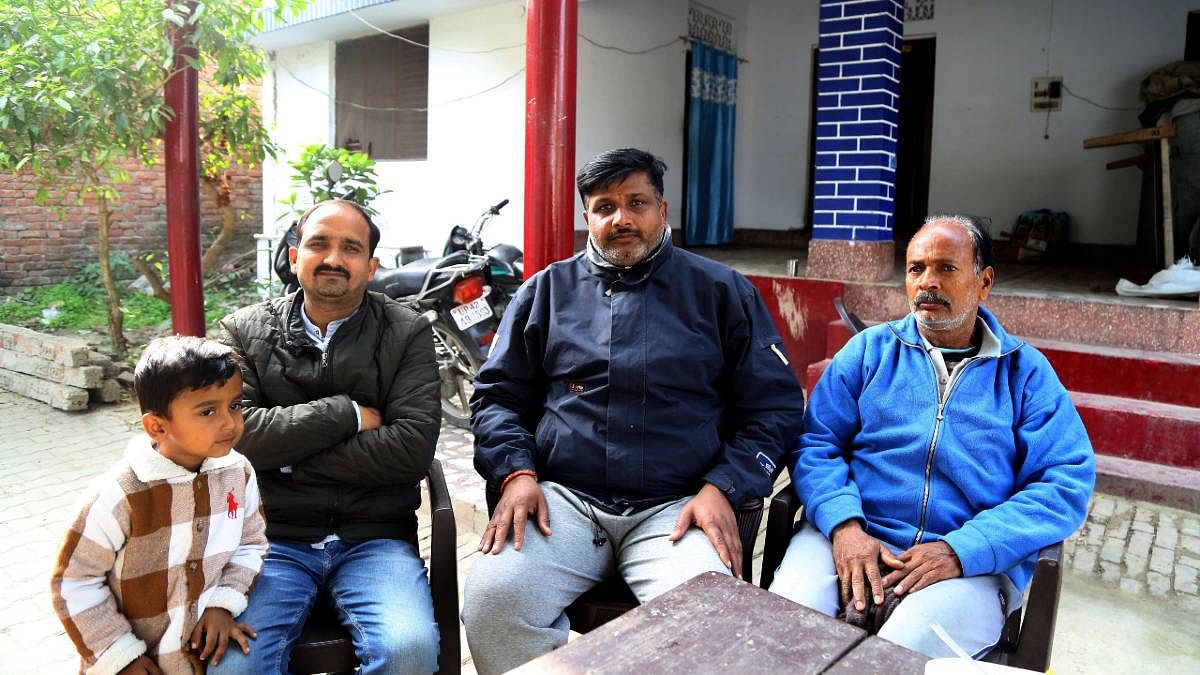
“Maps had been distributed on a wide scale. The police were present to stop the kar sevaks at every path, but the villagers used bullock carts, jeep and tractor-trolleys to stop the police and their vehicles outside the village. Children would inform elders about police movement and before the policemen could arrive, we ensured that the kar sevaks had left the village and moved towards the janmabhoomi via the floodplains,” he recalled.
Shiv Singh, 70, a resident of Sarairasi village and a member of the Rashtriya Swayamsevak Sangh (RSS), the BJP’s ideological fountainhead claims he was arrested twice at the time.
“From children to the elderly, everyone performed kar seva. The womenfolk would prepare food for the kar sevaks and ensured that none remained hungry. The kar sevaks would gather at the village’s Ram Janki temple where they would be given food,” he said.
‘We are ecstatic, but have a grouse’
Now, more than three decades later, ahead of Ram lalla’s consecration ceremony, the Suryavanshi Thakurs are ready to celebrate the temple construction.
“We celebrate Diwali to mark the 14-year vanvaas (exile) of prabhu Ram. This Diwali [a reference to the pran pratishtha ceremony] is even more special as it would mark the end of 500-year vanvaas of Ram Lalla. Our happiness knows no limits,” Shiv said.
There is, however, one grouse that the community is nursing.
Not a single member of the community has been invited for the consecration ceremony, nor made part of the Shri Ram Janmabhoomi Teerth Kshetra trust formed to manage the affairs of the new Ram temple, they say.
“While we are ecstatic, we also have a grouse that not a single Suryavanshi Thakur has been invited for the pran pratishtha nor made part of the trust,” Shiv told ThePrint.
He pointed out that even actors from Bollywood and Tollywood had got invites for the pran pratishtha, and reiterated the community’s demand that at least one representative be invited.
“[Samajwadi Party chief] Akhilesh Yadav whose father [Mulayam Singh Yadav] had ordered firing upon the kar sevaks [as then chief minister of Uttar Pradesh] has been invited, but not a single person from among us, who are descendants of prabhu Ram, has been invited. We have a grouse and I request [Prime Minister Narendra] Modi ji and [Uttar Pradesh Chief Minister] Yogi Adityanath ji not to invite such people. If they are invited, how can we Suryavanshis, whose ancestors sacrificed their lives for the liberation of the lord, be left out?” he asked.
The aggrieved community had even thought of protesting by collectively marching towards the temple on 22 January, but claim the Ayodhya police vetoed the plan.
“We had held a meeting at the Raja Dashrath Samadhi Sthal a few days ago and declared that if the invitation doesn’t come, we will gather and walk towards the temple for a darshan of prabhu Ram after the pran pratishtha. But the police have become active and said they wouldn’t allow it. Our grouse will remain forever,” said Shiv.
Summing up the mood among the Suryavanshi Thakurs of Ayodhya, Vanshraj Singh said, “Humein dhan nahi chahiye, Ram chahiye [we don’t want money, we want Ram],” he told ThePrint.
(Edited by Nida Fatima Siddiqui)
Also Read: How BJP, VHP & RSS are mobilising people across India for Ram Lalla’s pran pratishtha in Ayodhya


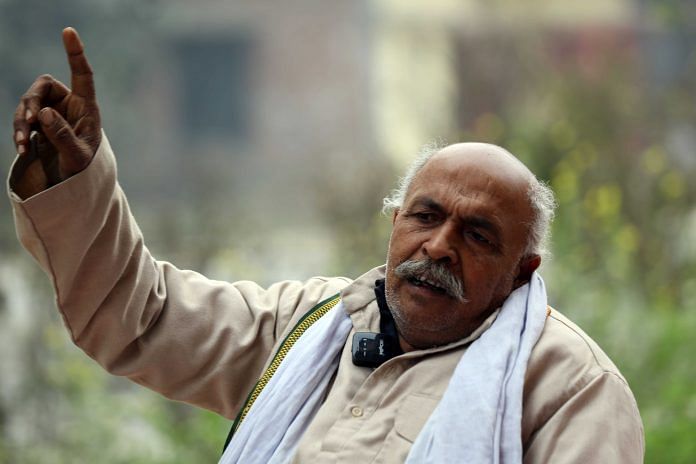

What evidence do they have for this claim?